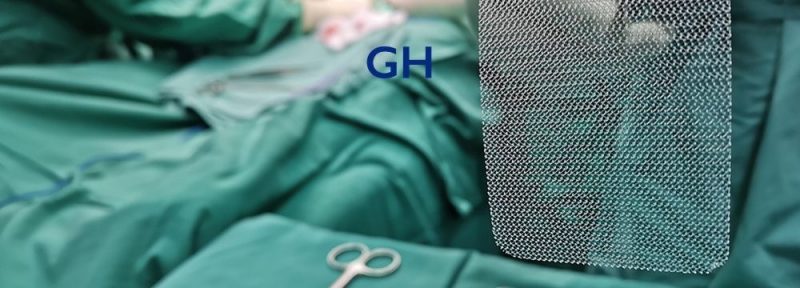Hernia
Hernia surgery is one of the most performed general surgical procedures in the United States and around the world. Of all the hernia surgeries performed every year, inguinal hernia surgery is the most common. An inguinal hernia is a hernia in the groin area and disproportionately affects men over women. About 750,000 inguinal hernias are repaired every year out of the million-or-so total hernia repairs. Hernia repair has improved both in safety and efficacy over the years. With better technique and better technology, we have reduced recurrence rates significantly while also reducing the likelihood of post-hernia chronic pain. However, despite these massive improvements, there are still many misconceptions about hernias and how we repair them. In this article, we will discuss some of those truths and myths.
The truth that about hernia repair
One truth to remember is that not all hernias need to be repaired. For example, asymptomatic hernias – those found incidentally – usually when looking for other abdominal issues, are typically not repaired until they become symptomatic and start interfering with the patient’s lifestyle. Similarly, larger hernias in older patients may be watched rather than repaired, especially if the patient has general health issues or if they are deemed to be at high risk surgically. That said, the decision as to whether to have surgery or not needs to be made with an experienced hernia surgeon like Dr. Higa. Only after this consultation can you make an informed decision as to whether your hernia should be repaired or simply watched for a future repair. However, it is worth noting and bearing in mind that hernias are progressive, meaning they will grow over time.
While we don’t know much about it, it is true that there is a potential for postoperative hernia pain. This is especially true for inguinal hernia repairs. There are several potential explanations for this pain. First, many believe that the tacks once used to use to affix the hernia mesh to the muscle tissue could irritate nerves and cause chronic pain. Fortunately, we no longer use tacks and now hernia mesh is self-adhering. We also know that as little as a decade ago, hernia mesh was thicker and less refined than it is today. Now, we have a multitude of meshes that vary in thickness and can be customized to the patient’s situation. Employing an experienced surgeon is very helpful in ensuring that the mesh is properly sized, and the correct mesh type is chosen.
It is also true that hernia mesh-based hernia repairs carry a significantly lower risk of recurrence – the hernia coming back – versus traditional tension repairs. During a hernia mesh repair, the mesh is simply placed over the defect, and we allow the patient’s own scar tissue to surround the mesh and create a strong barrier. With proper mesh sizing and patient compliance with their postoperative instructions, this can be a long-lasting bond.
Hernia myths and misconceptions
You may have seen many legal commercials about defective mesh. However, these pelvic meshes are meant for a completely different subset of patients and are not the same as hernia meshes. It is true that over a decade ago, hernia mesh was recalled, but this was due to counterfeit mesh hitting the market and not because the genuine mesh was dangerous in any way. As a result, it is important that patients evaluate their decision as to whether to use mesh very carefully while disregarding these misconceptions.
Another common misconception about hernias is that they are obvious. This is not true. A very painful hernia can be the smallest hernia while a very large hernia may not hurt at all. And while many hernias manifest as a lump that can be felt and sometimes seen in various parts to the abdomen, this is not always the case. In fact, you may experience the heaviness, burning and pain associated with a hernia, but never actually see or feel that hernia. Only a qualified medical professional can diagnose the hernia at a consultation. Therefore, if you’re feeling any abdominal pain, it is important that you see your medical team to find out exactly what may be causing it.
The risks of an untreated hernia are very low. To be sure, most hernias do not represent a very high risk of strangulation or incarceration – two emergent problems that can occur with an uncorrected hernia. However, this is not universally the case. Femoral hernias – those that extend into the upper thigh, and most often affect women, should be repaired as soon as possible because they have a very high risk of strangulation – upwards of 20%. Strangulation is an emergency situation.
A hernia belt is all I need to control my hernia. This misconception may be dangerous as a hernia belt can cause the hernia to worsen and can make the repair more complex. Hernia belts should never be used and online tips and tricks to manage a hernia should be avoided. Unfortunately, the only solution for asymptomatic hernia is surgery. As mentioned above, some patients may wait to have their hernia repaired, but this should only be done under the supervision of a qualified hernia specialist.
The hernia myths and truths mentioned above are only a few of the many that you will find on the Internet and elsewhere. Most importantly, for any abdominal discomfort, you should see a qualified physician to get a proper diagnosis and treatment plan. While most abdominal issues are very minor, there are some that may require further medical treatment, and these should be identified as soon as possible. For more information, we encourage you to contact our office and schedule a consultation with Dr. Higa who can offer advice on how to handle your hernia.





